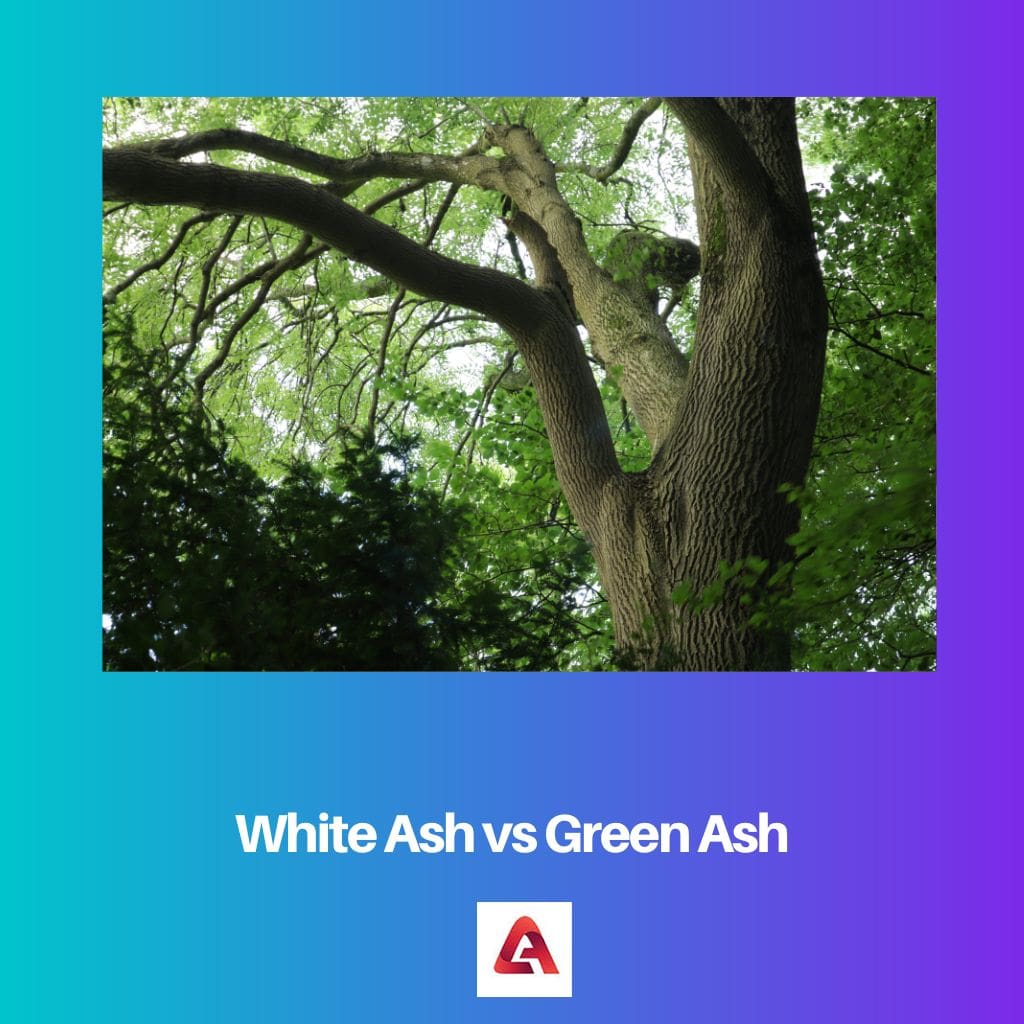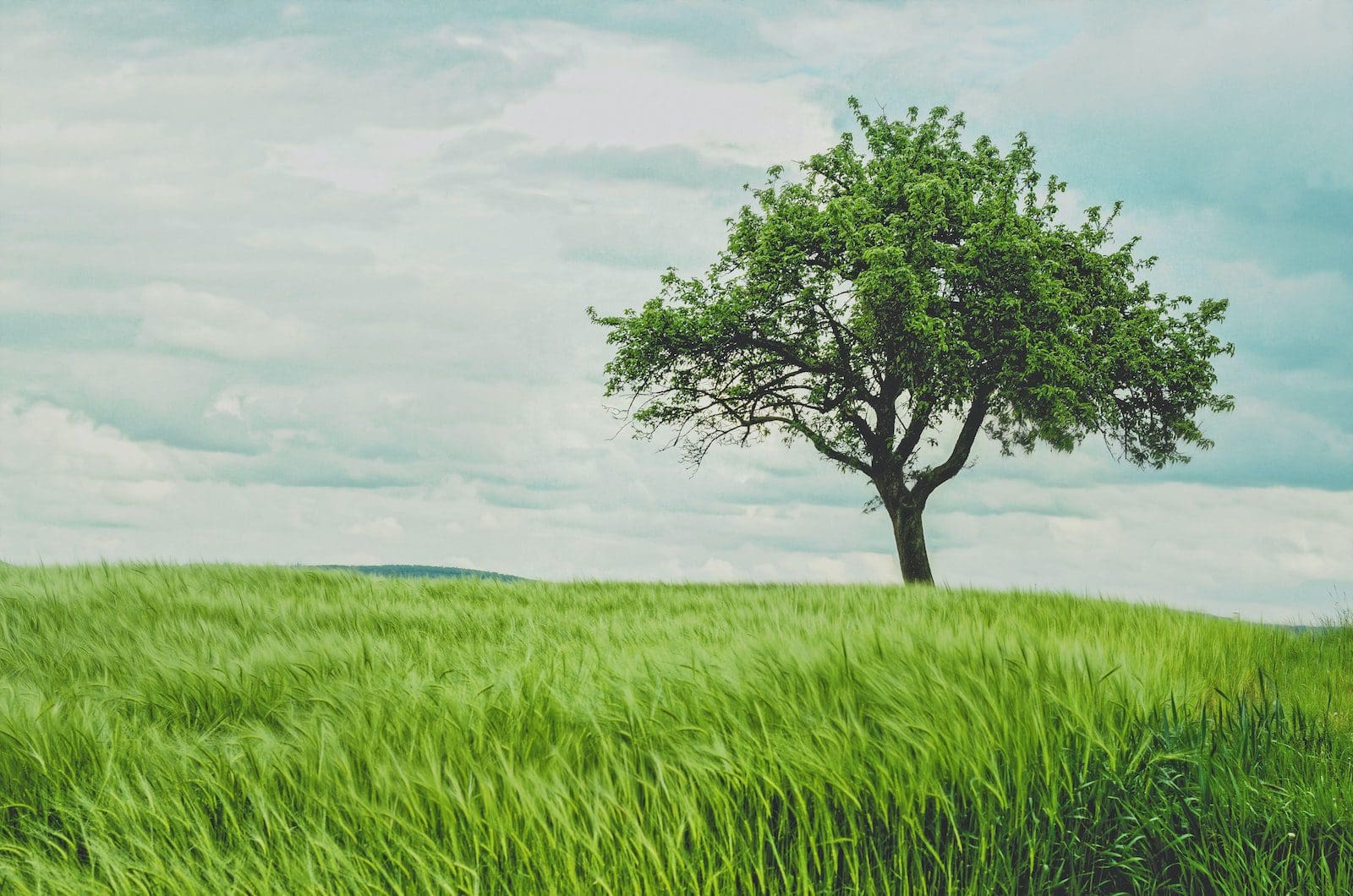White Ash and Green Ash are the species of the Ash tree. The Ash tree of the Plantae kingdom is the flowering plant of the olive and lilac families.
The biological name for Ash is Fraxinus. There are almost 8 billion Ash trees in the United States, as per estimation. The majority of them are the white ash trees and the green ash trees.
Key Takeaways
- White Ash has lighter gray bark and compound leaves with seven leaflets, while Green Ash features darker gray bark and compound leaves with five to nine leaflets.
- White Ash prefers well-drained soils and tolerates dry conditions, whereas Green Ash thrives in wetter environments and poorly drained soils.
- White Ash wood has a higher density and better resistance to splitting, making it more suitable for furniture and tool handles, while Green Ash wood is softer and used mainly for crates and boxes.
White Ash vs Green Ash
The difference between White ash and green ash is that the leaf scars of white ash are U-shaped while green ash is D-shaped. Also, white ash trees reach a height of 80 feet tall, while green ash trees are 70 feet tall. The leaves of white ash are also longer than green ash trees. And the white ash trees are attached by longer petioles while green ash is attached by short petioles.

White Ash trees are long in height, up to 80 feet. They have shades of color in their leaves. Mostly, their leaves are lighter in color at the undersides while darker at their upper sides.
The white ash trees have strength in their wood, and therefore, the wood is preferred to make furniture.
Green ash trees grow up to 70 feet. It can live up to hundreds of years same as the white ash trees. Green ash trees are mostly found in floodplains and riparian areas. They adapt to environmental conditions easily.
The bark of green ash is more flakey and plate-like, with horizontal cracks.
Comparison Table
| Parameters of Comparison | White Ash | Green Ash |
|---|---|---|
| Scientific Name | Fraxinus Americana | Fraxinus Pennsylvanica |
| Use | The wood is used to make baseball bats, furniture, etc. | The wood is lighter but has strength so is used to make electric guitar’s body. |
| Leaf Scars | The leaf scars are U-shaped. | The leaf scars are D-shaped. |
| Height | The white trees are at least 80 feet tall. | The green trees grow up to 70 feet. |
| Soil | Mostly grows in moist soil. | They grow in sandy, clay soil. |
What is White Ash?
White ash is a species of ash tree. Ash is a genus of flowering plants. The scientific name of white ash is Fraxinus Americana.
It is also known as American ash as it is normally found in eastern and central North America. And the species is also naturalized in Hawaii.
White ash trees are mostly found on mesonic sites in the early to mid-stages of the forest succession. The white ash is called white because the leaves are white-green from their undersides.
The lower sides are light in color, while the upper sides are darker. Although, some of the white ash trees have yellow color leaves, which transfer to purple or red color in a later stage. The leaf scars of white ash are U-shaped.
The white ash trees reach a height of at least 80 feet tall, and they grow in moist soil and in well-drained soil, which has a neutral pH acidity. The white ash tree has strong white wood, which is quite dense.
And therefore, it is one of the most used trees for everyday purposes like making tool handles, baseball bats, flooring, and furniture. Indeed, the wood of the white ash trees is also used to make lobster traps.

What is Green Ash?
Green Ash trees are also known as Red ash, Downy ash, Swamp Ash, and Water ash. The scientific name is Fraxinus Pennsylvanica.
The green ash trees are also found in eastern and central North America. The natural habitat of the green ash trees is almost exclusively streaming sides, floodplains, riparian areas, and bottomlands.
The wood of green ash trees is hard and has strength, indeed, they have versatile properties. They are lighter as well, still are strong, and therefore are preferred to make electric guitar bodies.
It gives a bright sound with long sustainability. Green ash trees are the most widely distributed of all the American ash tree species.
The green ash trees grow up to a height of 70 feet, and they mostly grow in sandy, clay soils. They have small leaves, and the leaf scars are D-shaped.
Green ash trees are adaptable to environmental conditions. They can grow in full sunlight as well as partial sunlight. Their leaflets are mostly attached by short petioles and are tapered at the base.
Also, green ash is extremely popular because it can grow rapidly and have a tolerance to urban pollution. These trees are severely threatened by the emerald ash borer, an exotic beetle.

Main Differences Between White And Green Ash
- The white ash leaves are longer than the green ash leaves.
- The leaf scars are different. The leaves of white ash trees have U- shaped scars, whereas the leaves of green ash trees have D-shaped scars.
- The white ash trees reach a height of 80 feet. On the other hand, Green ash trees reach a height of about 70 feet. That is, White ash is longer in height than green ash.
- The white ash trees have leaves that are light in color from the underside, and they are whitish-green, while the upper side is dark. The green ash trees have completely green leaves.
- White ash trees normally grow in moist soil, while green ash trees grow in clay, rocky, and sandy soils.
- White ash trees need full sunlight to grow, and they cannot withstand environmental conditions, while on the other hand, green ash trees can withstand all environmental conditions.
- Leaflets of the white ash trees are attached by longer petioles, while short and winged petioles attach the leaflets of green ash trees.

- https://www.fs.usda.gov/treesearch/pubs/13953
- https://link.springer.com/content/pdf/10.1007/s00107-008-0233-9.pdf

The detailed comparison of White Ash and Green Ash trees in this article is intellectually stimulating, offering readers a comprehensive understanding of their distinct characteristics and wood properties. It’s a must-read for botany enthusiasts and environmental researchers.
I completely agree. The article’s focus on the differences between White Ash and Green Ash trees is both enlightening and educational, providing valuable knowledge for students and professionals in the field of forestry and ecology.
This article provides a thorough and detailed comparison of White Ash and Green Ash trees, shedding light on their unique characteristics, growth habitats, and uses. It’s an engaging read for anyone passionate about arboriculture and environmental science.
Absolutely, the detailed analysis of White Ash and Green Ash trees in this article provides valuable insights for individuals interested in dendrochronology and tree conservation.
I completely agree. The article’s emphasis on the differences between White Ash and Green Ash, from their leaf scars to wood properties, is fascinating and educational.
The article effectively presents the differences between White Ash and Green Ash, providing a clear and detailed analysis of their unique attributes. It’s an enlightening read for those with an interest in plant taxonomy and ecology.
Indeed, the article’s focus on the distinct features and uses of White Ash and Green Ash trees is commendable. It’s a valuable resource for anyone studying arboriculture or forestry.
The article effectively outlines the unique features and preferred habitats of White Ash and Green Ash trees, providing an insightful comparison for readers interested in botany and ecological diversity.
I completely agree. The detailed examination of White Ash and Green Ash trees in this article is both informative and enlightening, offering valuable knowledge for those passionate about forest ecology and conservation.
The comparison of White Ash and Green Ash in this article is highly informative, providing in-depth details on their physical characteristics, uses of their wood, and preferred environmental conditions. It’s a great piece for those interested in botanical studies.
Absolutely, the article’s emphasis on the differences in leaf scars, height, and soil preferences of White Ash and Green Ash trees is both educational and thought-provoking.
I agree. The detailed overview of White Ash and Green Ash trees in this article is beneficial for students and professionals in the field of horticulture and forestry.
This article provides comprehensive information about the differences between White Ash and Green Ash trees, including their physical characteristics, preferred soil types, and uses of their wood. It’s an interesting and informative read for anyone interested in botany.
I completely agree. The details provided about the leaf scars, height, and soil preferences of White Ash and Green Ash trees are particularly fascinating.
The article offers a comprehensive examination of the distinct features and habitats of White Ash and Green Ash trees, providing valuable knowledge for enthusiasts of dendrology and botanical conservation.
Absolutely, the article’s detailed comparison of White Ash and Green Ash trees serves as an invaluable resource for those interested in plant biology and ecological studies.
This article presents a comprehensive analysis of the physical characteristics, habitats, and uses of White Ash and Green Ash trees, catering to the intellectual curiosity of individuals interested in botany and environmental biology.
Absolutely, the article’s thorough comparison of White Ash and Green Ash trees provides valuable insights for those studying plant taxonomy and forest management.
The article provides valuable insights into the biological characteristics and habitats of White Ash and Green Ash trees. It’s a well-researched piece that sheds light on the unique attributes of these tree species.
I couldn’t agree more. The detailed comparison of White Ash and Green Ash, from their leaf characteristics to wood properties, is both enriching and intellectually stimulating.
Absolutely, the article offers a comprehensive overview of these tree species, making it a valuable read for those interested in botany and environmental science.
The article effectively highlights the distinct features of White Ash and Green Ash trees, allowing readers to gain a deeper understanding of these species. It’s a great resource for individuals interested in forestry and tree identification.
Absolutely, the comparison table is especially helpful in understanding the differences between White Ash and Green Ash trees in a concise manner.